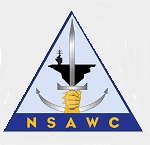Hobby Master HA5129 US Navy Boeing F/A-18E Super Hornet Strike Fighter - 165536, "Top Gun", NAS Fallon, Nevada, 2020 (1:72 Scale)
"It's like two teams playing against each other. You don't know what that offense is going to do. You don't know what defense you're going to be presented with, either."
- Navy Cmdr. Dustin Peverill
 The Boeing F/A-18E and F/A-18F Super Hornet are supersonic twin-engine, carrier-capable, multirole fighter aircraft variants derived from the McDonnell Douglas F/A-18 Hornet series. The F/A-18E single-seat and F/A-18F tandem-seat variants are larger and more advanced versions of the F/A-18C and D Hornet.
The Boeing F/A-18E and F/A-18F Super Hornet are supersonic twin-engine, carrier-capable, multirole fighter aircraft variants derived from the McDonnell Douglas F/A-18 Hornet series. The F/A-18E single-seat and F/A-18F tandem-seat variants are larger and more advanced versions of the F/A-18C and D Hornet.
The Super Hornet has an internal 20mm M61A2 rotary cannon and can carry air-to-air missiles, air-to-surface and a variety of other weapons. Additional fuel can be carried in up to five external fuel tanks and the aircraft can be configured as an airborne tanker by adding an external air-to-air refueling system.
Designed and initially produced by McDonnell Douglas, the Super Hornet first flew in 1995. Low-rate production began in early 1997 with full-rate production starting in September 1997, after the merger of McDonnell Douglas and Boeing the previous month. The Super Hornet entered fleet service with the United States Navy in 1999, replacing the Grumman F-14 Tomcat, which was retired in 2006; the Super Hornet has served alongside the original Hornet. The Royal Australian Air Force (RAAF), which has operated the F/A-18A as its main fighter since 1984, ordered the F/A-18F in 2007 to replace its aging General Dynamics F-111C fleet. RAAF Super Hornets entered service in December 2010. In February 2023, Boeing announced plans to end production of the Super Hornet in 2025.
Pictured here is a gorgeous 1:72 scale diecast replica of a United States Navy F/A-18E Super Hornet assigned to NAS Fallon Air Base, Nevada, during 2020.
Sold Out!
Dimensions:
Wingspan: 7-1/2-inches
Length: 9-inches
Release Date: October 2023
 Historical Account: "Top Gun" - The United States Navy Strike Fighter Tactics Instructor program (SFTI program), more popularly known as TOPGUN, teaches fighter and strike tactics and techniques to selected naval aviators and naval flight officers, who return to their operating units as surrogate instructors. It began as the United States Navy Fighter Weapons School, established on March 3rd, 1969, at the former Naval Air Station Miramar in San Diego, California. In 1996, the school was merged into the Naval Strike and Air Warfare Center at Naval Air Station Fallon, Nevada.
Historical Account: "Top Gun" - The United States Navy Strike Fighter Tactics Instructor program (SFTI program), more popularly known as TOPGUN, teaches fighter and strike tactics and techniques to selected naval aviators and naval flight officers, who return to their operating units as surrogate instructors. It began as the United States Navy Fighter Weapons School, established on March 3rd, 1969, at the former Naval Air Station Miramar in San Diego, California. In 1996, the school was merged into the Naval Strike and Air Warfare Center at Naval Air Station Fallon, Nevada.
In 1968, Chief of Naval Operations (CNO) Admiral Thomas Hinman Moorer ordered Captain Frank Ault to research the failings of the U.S. air-to-air missiles used in combat in the skies over North Vietnam. Operation Rolling Thunder, which lasted from March 2nd, 1965, to November 1st, 1968, ultimately saw almost 1,000 U.S. aircraft losses in about one million sorties. Rolling Thunder became the Rorschach test for the Navy and Air Force, which drew nearly opposite conclusions
The United States Navy Fighter Weapons School was established on March 3rd, 1969, at Naval Air Station Miramar, California. Placed under the control of the VF-121 "Pacemakers," an F-4 Phantom-equipped Replacement Air Group (RAG) unit, the new school received relatively scant funding and resources. Its staff consisted of eight F-4 Phantom II instructors from VF-121 and one intelligence officer hand-picked by the school's first officer-in-charge, Lieutenant Commander Dan Pedersen, USN. Together, F-4 aviators Darrell Gary, Mel Holmes, Jim Laing, John Nash, Jim Ruliffson, Jerry Sawatzky, J. C. Smith, Steve Smith, as well as Wayne Hildebrand, a naval intelligence officer, built the Naval Fighter Weapons School syllabus from scratch. To support their operations, they borrowed aircraft from its parent unit and other Miramar-based units, such as composite squadron VC-7 and Fighter Squadron VF-126. The school's first headquarters at Miramar was in a stolen modular trailer.
According to the 1973 command history of the Navy Fighter Weapons School, the unit's purpose was to "train fighter air crews at the graduate level in all aspects of fighter weapons systems including tactics, techniques, procedures and doctrine. It serves to build a nucleus of eminently knowledgeable fighter crews to construct, guide, and enhance weapons training cycles and subsequent aircrew performance. This select group acts as the F-4 community's most operationally orientated weapons specialists. TOPGUN's efforts are dedicated to the Navy's professional fighter crews, past, present and future."
Highly qualified instructors were an essential element of TOPGUN's success. Mediocre instructors are unable to hold the attention of talented students. TOPGUN instructors were knowledgeable fighter tacticians assigned to one or more specific fields of expertise, such as a particular weapon, threat, or tactic. Every instructor was required to become an expert in effective training techniques. All lectures were given without notes after being screened by a notorious "murder board" of evaluators who would point out ambiguities or flawed concepts in the draft presentation. The curriculum was in a constant state of flux based upon class critiques and integration of developing tactics to use new systems to combat emerging threats. Instructors often spent their first year on the staff learning to be an effective part of the training environment.


